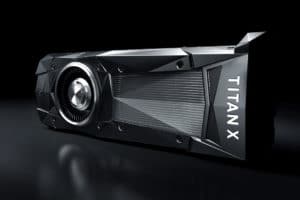There’s more to an infant’s cry than what meets the ear.
A Nigerian startup is seeking potentially life-saving information in those wails using AI.
It’s developing a deep learning model to enable hospitals in developing nations to use this data to improve treatment of birth asphyxia, one of the most common — and deadly — neonatal conditions.
The World Health Organization estimates that birth asphyxia, or the loss of oxygen to a newborn during birth, kills as many as 4 million infants every year, or more than one-third of all deaths of children under the age of five.
Charles Onu, founder of startup Ubenwa (which literally means “cry of a baby” in Igbo, a language spoken by millions of people in Nigeria and elsewhere) learned about asphyxia during his undergraduate studies several years ago. He wanted to apply his engineering education to solving the problem.
Onu later read about a piece of research from the 1970s that established a connection between voice and asphyxia, and he began wondering about the connection between the condition and a newborn’s cry.
“It was this work that led me into machine learning,” Onu said. “My natural inclination was to ask, ‘Is there something I can do about it?’”
The Road to Deep Learning
As Onu learned about machine learning, he realized that pattern identification was an approach that fit well with identifying subtle indicators in a newborn infant’s cry.
Eventually, he founded Ubenwa with engineering lead Innocent Udeogu, obtained a dataset of 1,400 infant crying examples from researchers in Mexico, and started developing a machine learning algorithm that would detect subtle distinctions in infant cries to identify the presence of asphyxia.
Ubenwa is based in Nigeria, but Onu works with a small team in Montreal, where he is a graduate research assistant at McGill University.

In 2015, Onu won the best paper award at the Neural Information Process Systems Workshop on Machine Learning in Healthcare. The prize was an NVIDIA TITAN X.
Onu and Udeogu paired that GPU with the TensorFlow deep learning library to develop their models. The company is now looking to acquire more data from hospitals to further validate its models. Part of that effort involves scraping public websites such as YouTube for examples of crying infants.
On the Cusp of Impact
If its early machine learning algorithms are a predictor, Ubenwa is onto something: its first models achieved an 85 percent success rate in predicting the presence of asphyxia, an achievement detailed in a recent paper. This helped launch the company into the second round of IBM’s years-long Watson AI XPRIZE competition, which will award $5 million to the winner.
In developed nations, newborns are routinely screened for conditions such as asphyxia using blood drawn immediately after birth. Elsewhere, hospitals often lack the required equipment and expertise, and have undependable electricity.
Ubenwa plans to offer a mobile application that will substitute for clinical efforts in developing countries. Caregivers could use Ubenwa to record an infant’s cry, and the app will compare the amplitude and frequency patterns of that cry against its deep learning models to determine whether asphyxia is present.
The company hopes to begin field trials in January 2020, initially focusing on Nigeria and its population of about 200 million. Regulatory complexities aren’t inconsiderable, by Onu believes Ubenwa can have a global impact, and potentially enable other diagnoses to be gleaned from an infant’s cry.
“Sudden infant death syndrome and other conditions could be detected earlier,” he said.